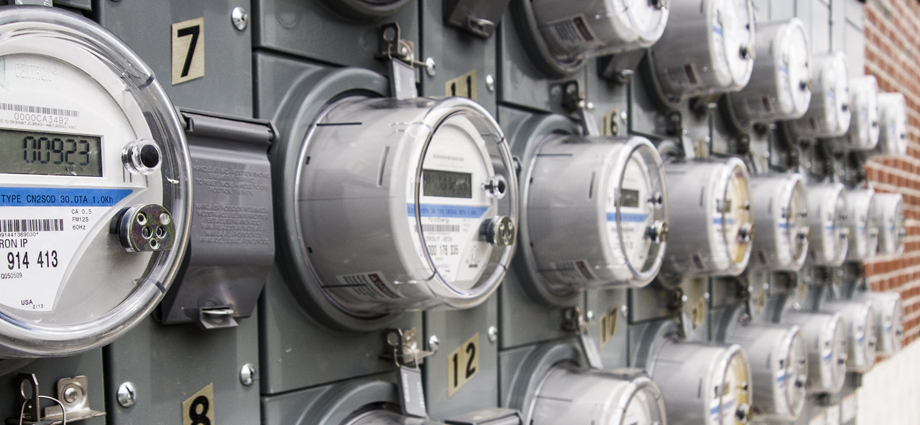
The remote and hybrid work environments that made their debuts in 2020 and 2021, respectively, have now become a permanent fixture for the workplace. In fact, according to a recent Gallup report, the nation’s full-time workforce has proved they can successfully do their jobs while working remotely—and that hybrid work, specifically, is linked to higher job satisfaction and productivity.
While employees are rejoicing in being free from the grind of a daily commute, this workplace shift has dramatically affected building occupancy rates, leaving many building managers scratching their heads over the effect of lower occupancy rates on building energy consumption.
Occupancy Rates and their Effect on Energy Consumption
Despite the change in commercial building occupancy rates, one thing hasn’t changed: These buildings use a ton of energy. In fact, according to the U.S. Department of Energy, nearly 20 percent of all the energy used in the United States still goes to power commercial buildings. That’s roughly 1.8 quadrillion BTUs of annual energy usage, much of which is attributed to HVAC systems, lighting, and electronic equipment.
With such massive energy consumption happening in a world where sustainability is a growing issue, building managers must explore every opportunity to make their buildings as energy efficient as possible.
Energy Monitoring, Smart Buildings Key to Improved Energy Savings
“When it comes to sustainability, commercial buildings can lead the way in improving energy efficiency,” explains Measurlogic’s John Stratford. “Much of the energy consumed by commercial buildings could be drastically reduced in a way that’s virtually unnoticeable to building occupants. The key to making informed decisions to reduce energy waste, without sacrificing the comfort and safety of building occupants, is data.”
Thanks to sophisticated energy meters like those from Measurlogic, and the building management systems (BMS) that are connected to these energy meters via FieldServer gateways, building managers can collect real-time data. This includes having the capability to track occupancy data and monitor and measure when, where, and how energy is consumed based on that data.
“Data collection and energy monitoring are the first step in reducing consumption,” says Stratford. “Smart energy metering enables building managers to extract, collect, and synthesize critical device data from the energy metering system. Building managers can then use this data to identify usage trends based on occupancy patterns and, subsequently, make more informed decisions regarding which energy-saving measures to put into place.”
7 Energy-Saving Strategies
To optimize energy efficiency, it’s essential to consider occupancy rates when optimizing existing buildings or designing new ones.
Here are a few smart strategies that can help keep energy costs low—and tenant comfort high.
1. Monitor, Measure, and Manage Energy Consumption
Leverage real-time energy monitoring technologies and energy dashboards to track and analyze usage patterns based on occupancy rates, and to identify improvement opportunities. Such improvements may include adjusting occupancy thresholds by reducing the power supplied to HVAC systems when occupancy rates fall below a certain point. Recommended solutions for remote access, monitoring, measuring, and troubleshooting include energy meters, FieldServer gateway (edge device), and FieldVEU (cloud-based monitoring, alarming, data visualization).
2. Automate Lighting Controls
Use advanced light and motion sensors to help conserve power. These devices automatically dim or turn off lights when building spaces are under- or unoccupied. Occupancy-based lighting sensors have been shown to reduce energy usage by 20-60%. In addition, daylight harvesting sensors that adjust the level of artificial light whenever there’s more natural lighting available are shown to reduce lighting energy use by up to 40%. Combined, this strategy alone can generate significant reductions and savings.
3. Employ Smart Thermostats and HVAC Systems
From zone control to adaptive scheduling, the use of smart thermostats and HVAC systems can enable building managers to heat and cool various areas of their building based on occupancy. After-hours and on weekends are typically the times when occupancy rates are down, so programming these devices to adjust temperatures accordingly can help stop energy waste and support sustainability goals.
4. Leverage the Building Management Systems (BMS)
A BMS allows building managers to monitor energy usage, forecast occupancy patterns, and adjust systems accordingly. In smart buildings, the BMS is usually integrated with a wide variety of sensors, including occupancy sensors. Building managers can configure the BMS to automatically adjust HVAC, ventilation, lighting, and other energy-consuming systems to reduce usage and costs when there are fewer people are in the building.
5. Install Energy-Efficient Materials and Equipment
Including modern-day materials and equipment in new buildings or renovation projects can make a big difference in overall energy consumption. Here are just a few of the many guidelines offered by the U.S. Department of Energy for optimizing building performance and reducing energy consumption:
- Install Energy Star Appliances, which are specifically designed to consume less power.
- Take advantage of smart plugs and power strips to turn devices off when not in use.
- Add automated shading and blinds to reduce heating and cooling demands and minimize heat absorption.
- Choose a high-efficiency HVAC system with programmable thermostats and advanced control systems to optimize temperatures based on occupancy levels.
- Integrate building management systems to enable centralized monitoring, tracking, and control.
6. Participate in Demand Response Programs
Many utilities offer demand response programs that provide lower rates and/or incentives when building managers shift or reduce energy during peak use periods. Again, this requires tracking and analyzing occupancy data, which is made easier with today’s building automation trends.
7. Educate Occupants
Enlisting in the help of building occupants is a surprisingly effective strategy, since most occupants are willing to comply once they understand the “why” and “how” of energy-saving practices. Building managers may want to implement policies and educate their occupants on practices that encourage green behavior, such as turning off lights and powering down equipment when not in use.
Conclusion
By implementing some or all of these strategies, building managers may be able to more efficiently manage their energy consumption even when the building is not fully occupied. To learn more about energy metering and monitoring, and building automation trends and occupancy rates, contact us.






